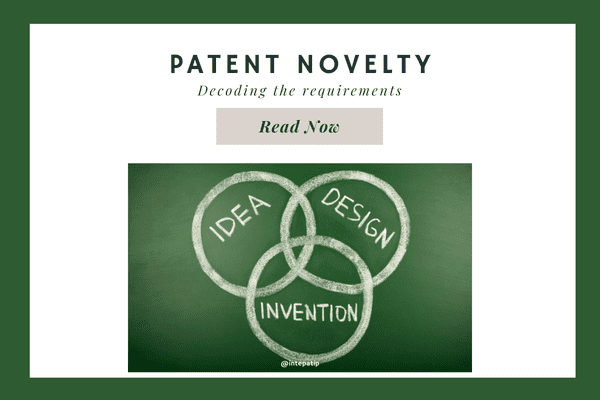Patent Novelty
A patent is an exclusive right granted under the law to the inventor to use his inventions for a limited period of time, and this right is granted to him by the Patents Act 1970.
This Act mandates that the invention for which a patent is sought is new or novel. Under section 2(1)(l) of the Act, it is emphasized that the “new invention” not have been anticipated, published in a document, or use anywhere in the world.
The term “invention” itself has been defined as a new product or a new process capable of having an industrial application. Though “new invention” has not been defined anywhere in the legislation, we can get some idea as to the requirement of novelty under the Act from the intention behind the enactment.
The novelty meaning
The Act requires that the invention, in respect of which the patent application is filed, must not form a part of the State of the Art, which comprises all of the matter and information that the public has access to before the filing date of the application. This may be available to the public in written, oral, or other forms.
The courts reaffirmed this patent novelty requirement in Bishwanath Prasad Radhey Shyam v. Hindustan Metal Industries: The fundamental principle of patent law is that it can only be granted invention, and it must be new and useful. This is to say, it must have Utility and Novelty. All of which leads us to the question, what exactly does the term “Novelty” mean in Patent Law? Although there is no concrete test with a universal application to determine novelty, we can look at some broad criteria for the same. Asking the question, “Whether this product or process is previously known or used?” is an excellent place to start since an affirmative on this question would negate novelty.
Novelty test in the U.S.
In the United States, the U.S. Supreme Court in Swofford v. B & W, Inc. and Graver Tank & v. Mfg. Co. v. Linde Sir Prod. Co. observed that utility and novelty are questions of fact, not law. Therefore, whether an invention has novelty or not has to be decided on a case-to-case basis.
Novelty can be determined by doing a thorough search through state-of-the-art. Making such a search proves that the invention in question is not novel, and searching with that perspective can help ensure that proper methods are followed.
Since a patent virtually grants the patent-holder a virtual monopoly over the use or production of their invention, giving such a right to a person over technology that people have been using previously would not be fair to others.
Novelty test in India
In India, the concept of novelty in Patents is a well-established one, and some cases that have discussed this are:
- Farbewerke Hoechst Aktiengesellschaft Vormals Meister Lucius v Unichem Laboratories:
In state-of-the-art, the publication or invention must contain all of the invention’s features in question. The invention will continue to have its novelty unless the patent claim in question is described in its entirety in the published material.
- Lallubhai Chakubhai Jariwala v Chimanlal Chunilal and Co:
Even though the invention’s utility and novelty are part of the test, novelty is the more critical aspect. Without novelty, there would be no development and, ultimately, the public’s betterment.
It is further observed that public use of the invention, if done, takes away the novelty factor, does not mean use by the general public, but use in a public manner, and that will be a question of fact in every case. It will not make a difference if the person using the invention is the patentee himself or someone else. Further, any use of the invention for trade or sale of that invention would also negate novelty.
Grace period consideration for novelty
In some countries like Australia, China, Japan, and the United States, inventors will often be given a grace period after publishing their invention details. This is to say that the inventor can, after publishing the details of their invention, still validly seek the grant of a patent if the application is made within a certain period. This period is usually about 6-12 months long. In Europe, however, any act that makes your invention public before the application is filed can take away the same novelty. In India, the Patent Act provides a one-year grace period. This grace period is also available in cases of trials. The sale of the invention would not count towards the same. Similarly, sections 29-32 lay down the exceptions for anticipation, including public displays and public working. Traditional Knowledge (section 3(p)) is also a significant caveat to novelty.
In selecting inventions, a new invention can be said to have been created using specific dimensions and values within previously known larger values. Though this is not expressly barred from being patentable, section 3(d); which talks about mere discovery, read with section 2(1)(ja); which talks about the necessity of an inventive step, can give us a pretty good idea of why the Indian Patent Office does not grant patents about such inventions.




